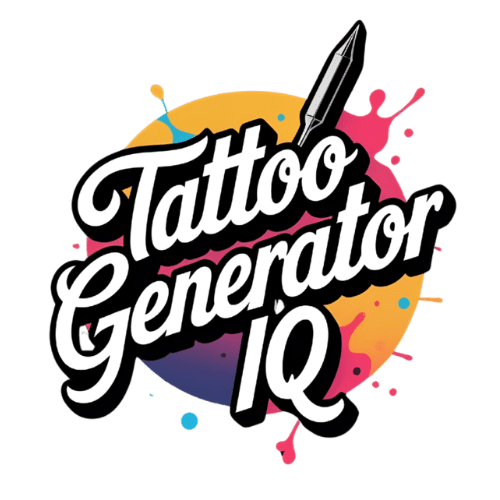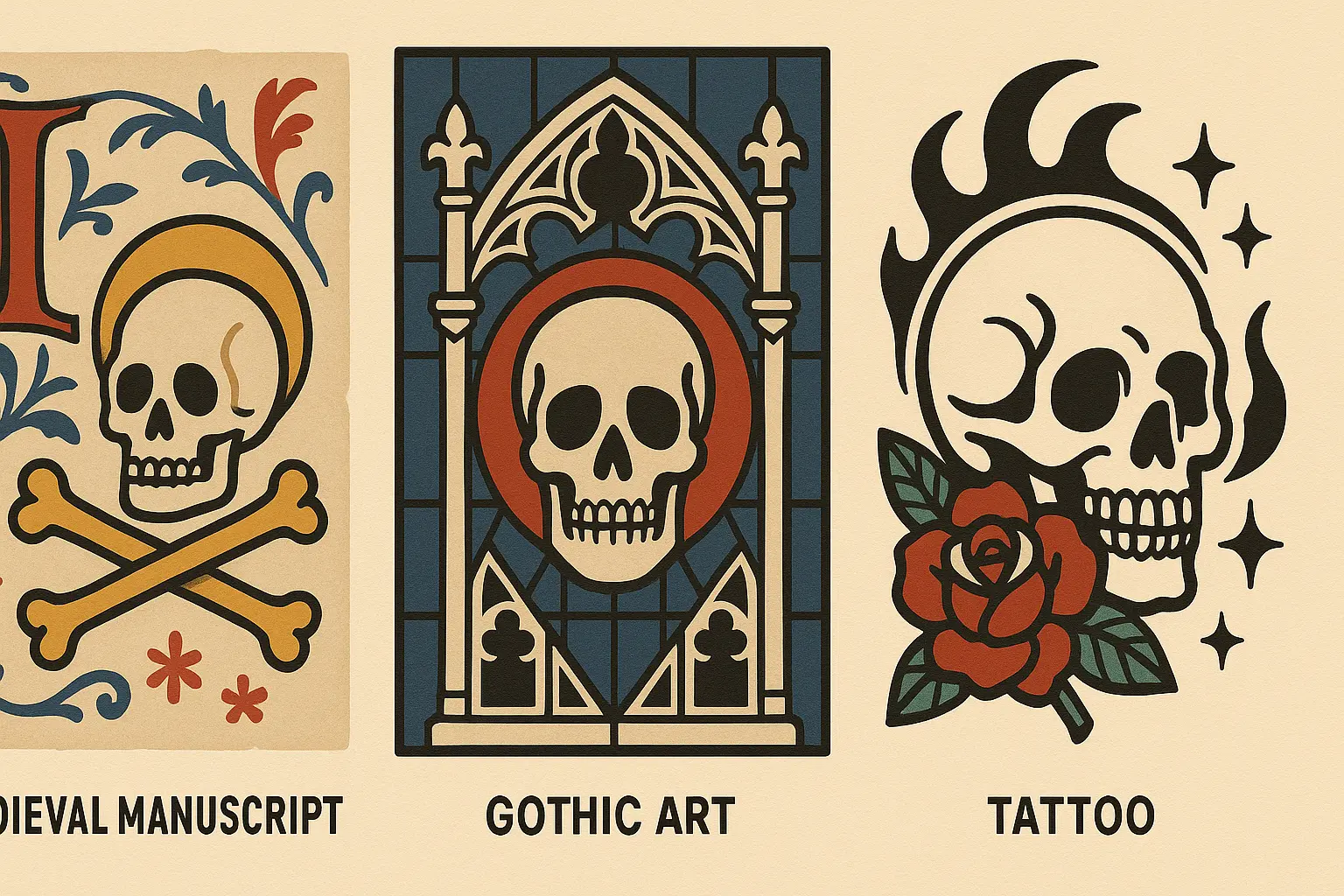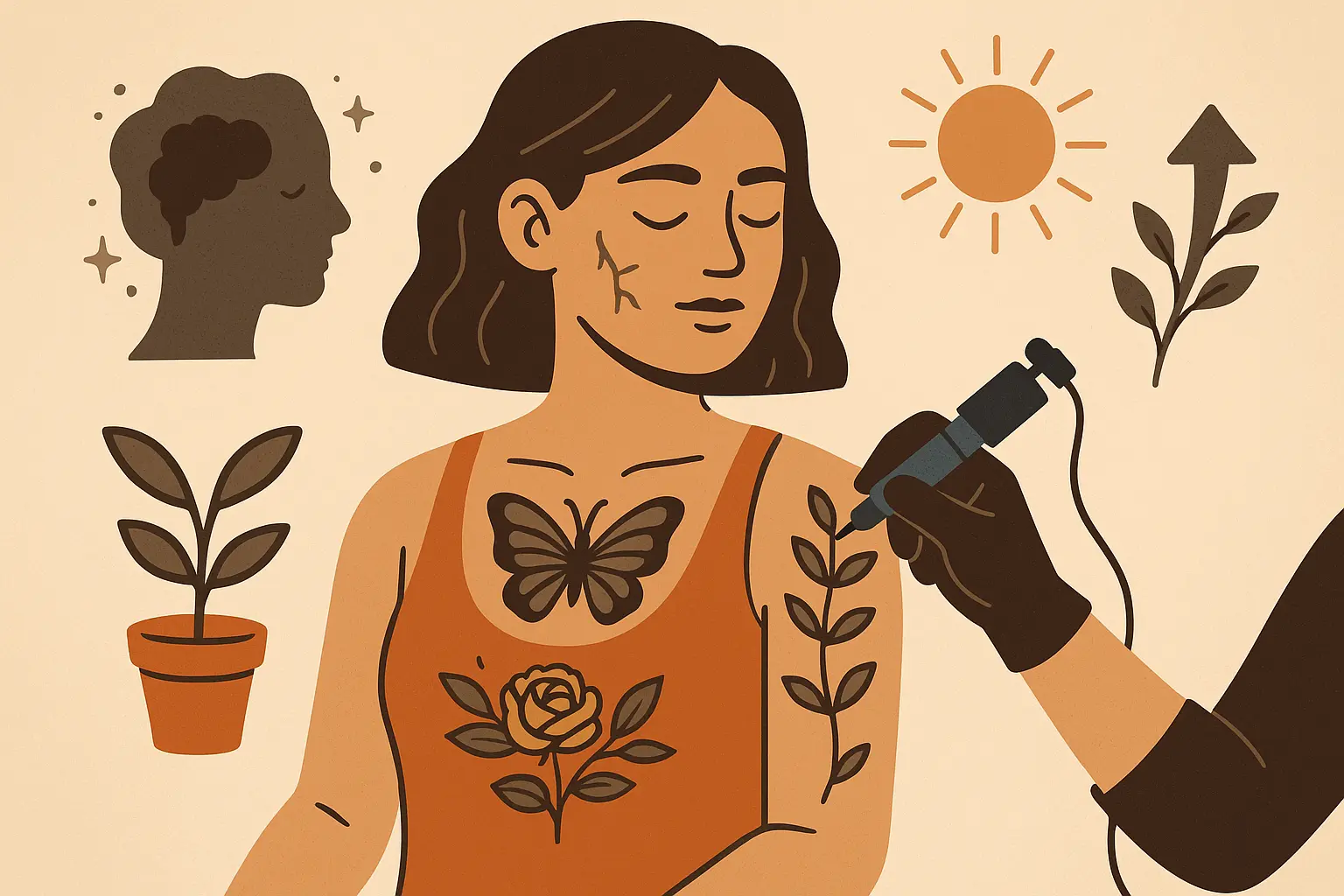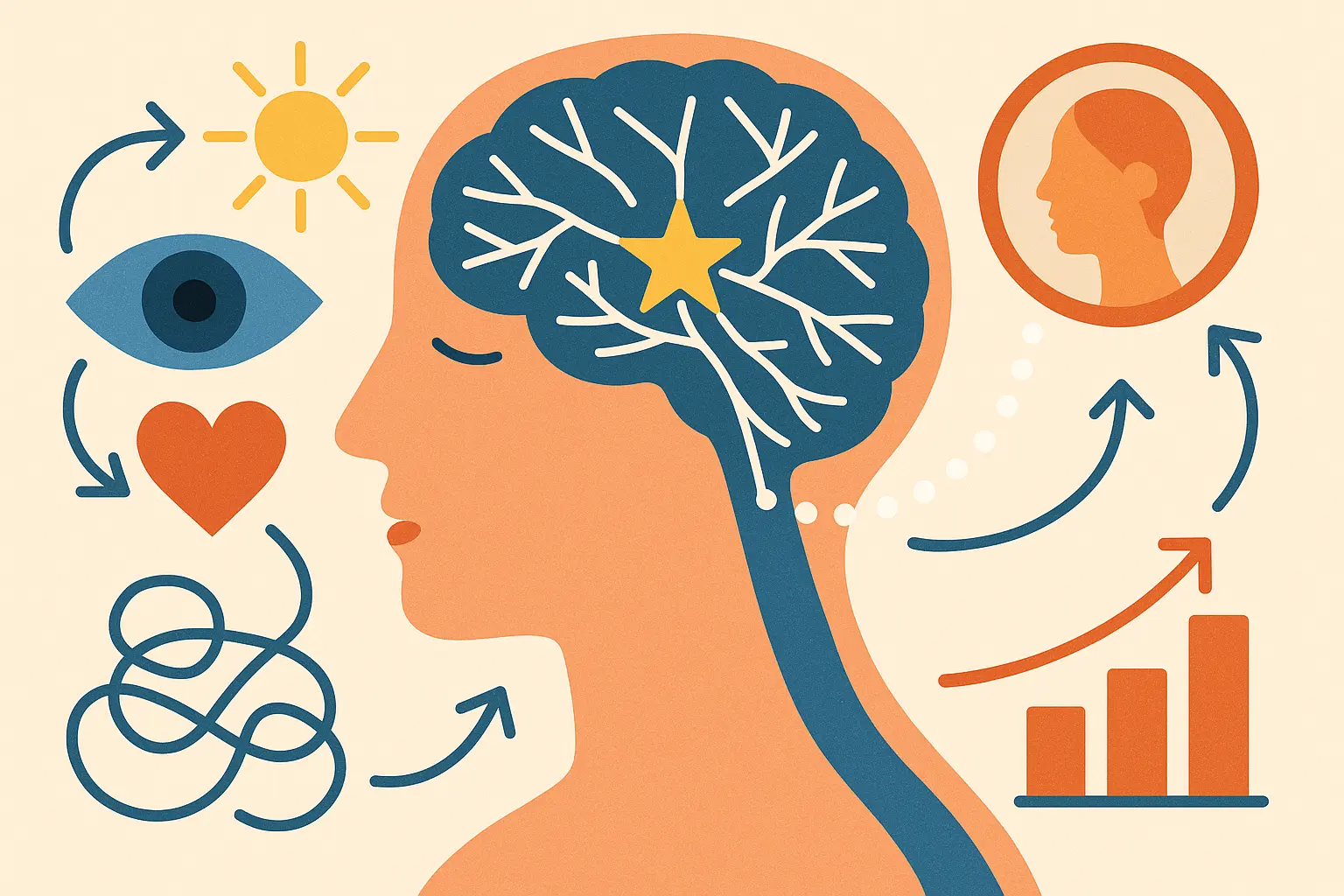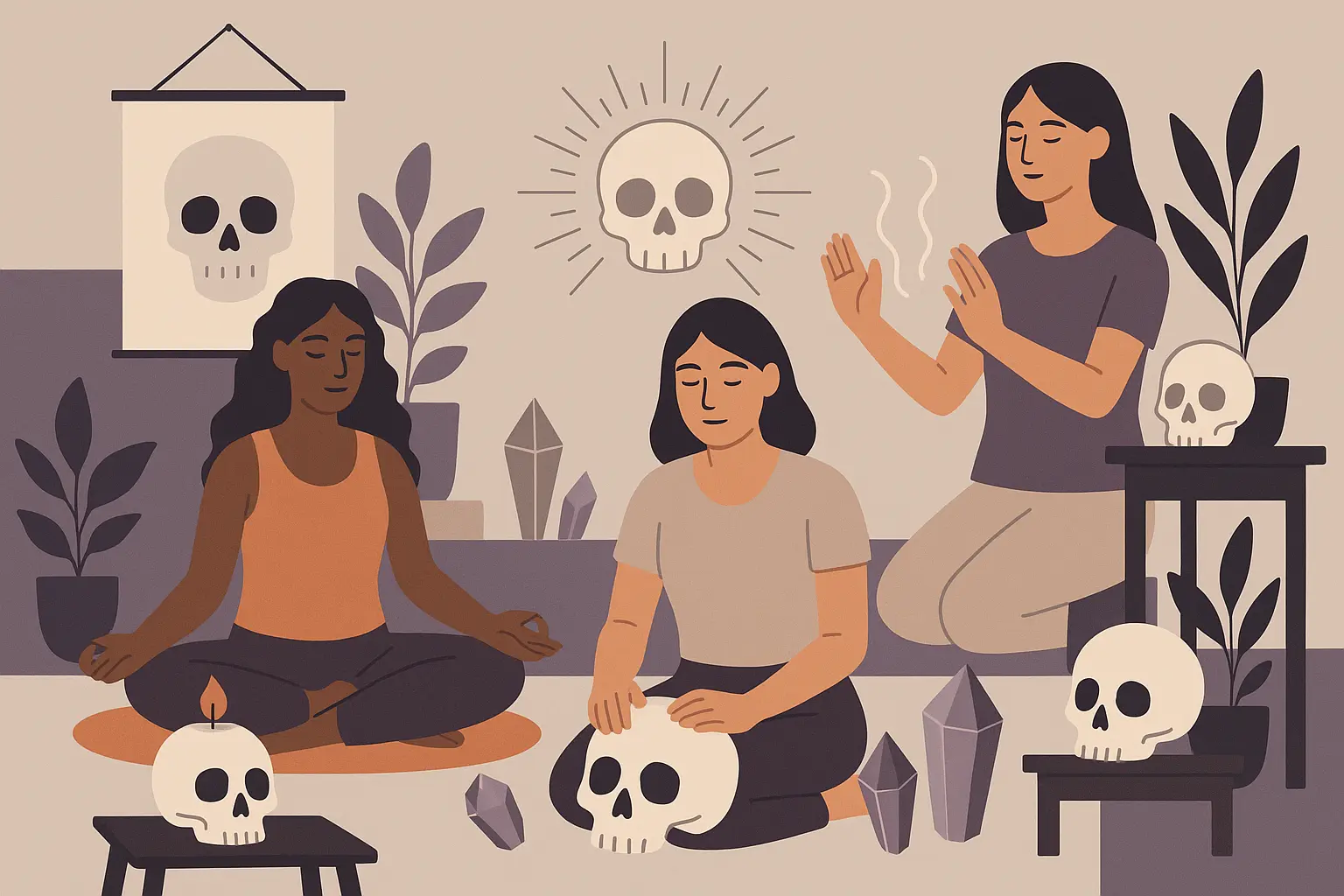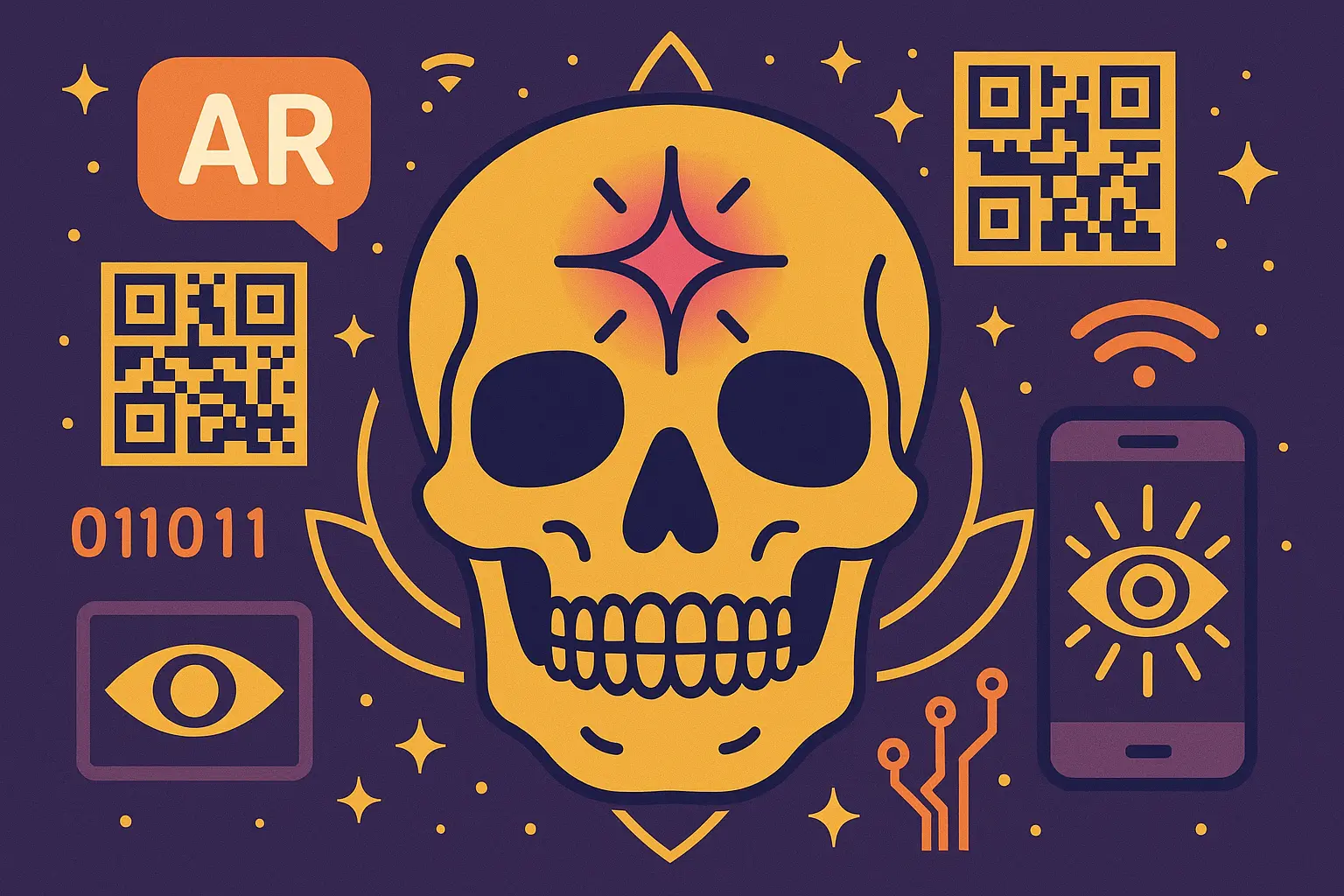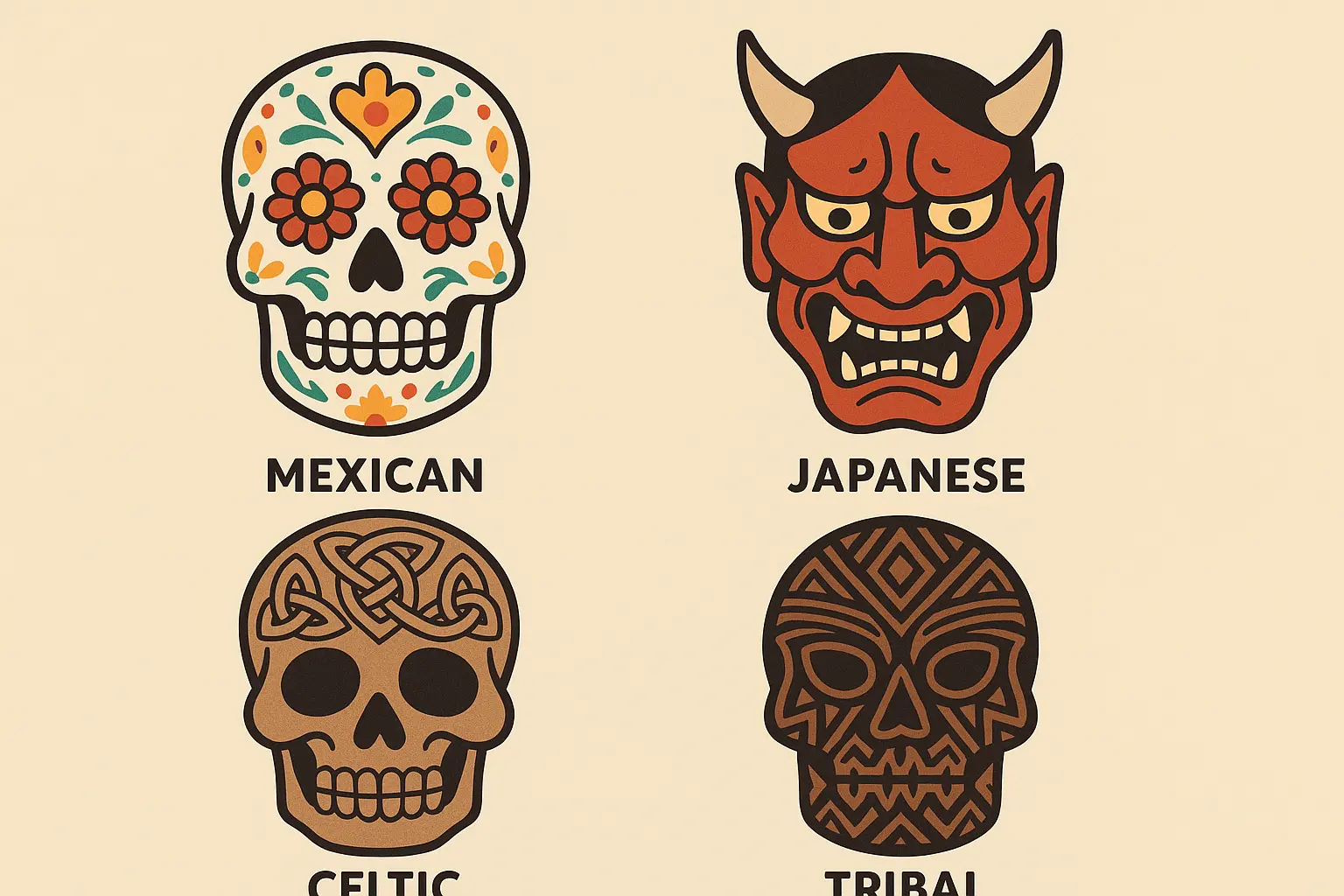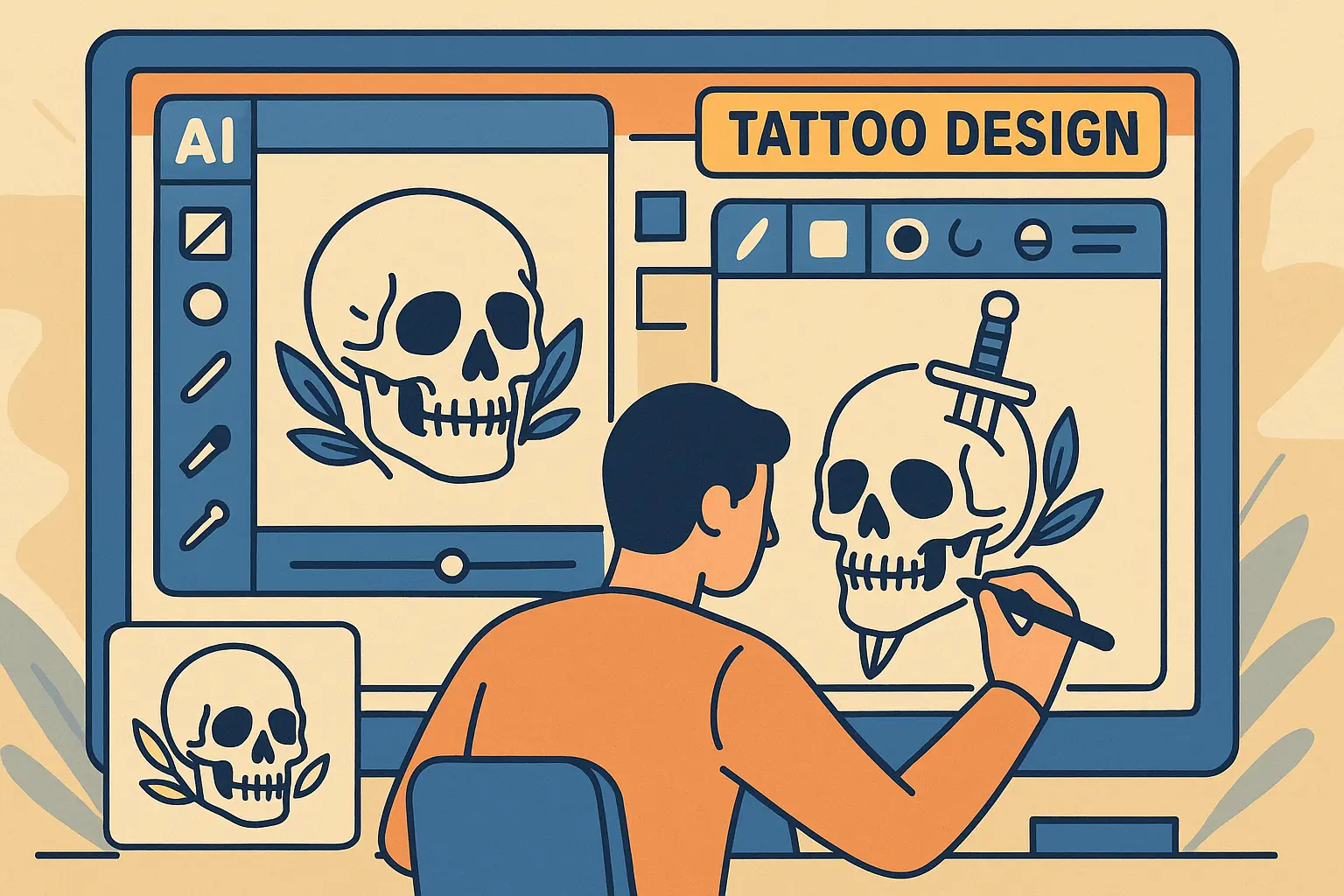Skull Tattoo Meaning: The Hidden Psychology Behind Why We’re Obsessed with Death Symbols
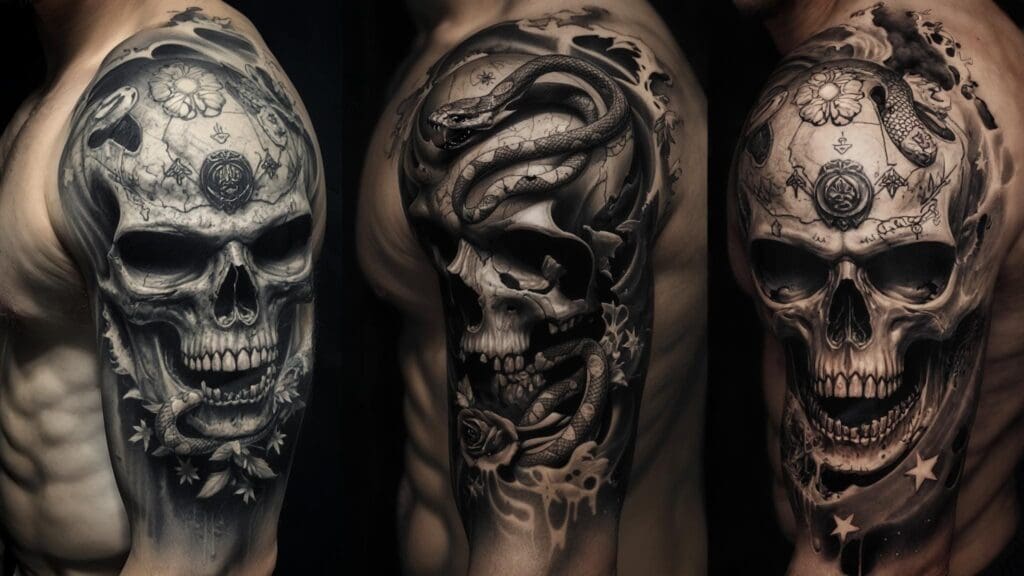
Table of Contents
-
Why Your Skull Tattoo Means Way More Than You Think
-
From Medieval Death Reminders to Modern Power Symbols
-
The Surprising Ways Different Cultures View Skull Imagery
-
How Gender Changes Everything About Skull Symbolism
-
Your Brain on Skull Tattoos: The Psychology Behind the Ink
-
Modern Spiritual Movements and Sacred Skull Art
-
Artistic Evolution: When Traditional Meets Digital Age Design
-
How AI Technology Honors Ancient Symbolism
TL;DR
-
Skull tattoos have evolved from medieval death reminders into complex symbols of personal transformation and empowerment
-
Different cultures interpret skull imagery as wisdom, spiritual power, and ancestral connection rather than just death
-
Women use skull tattoos to reclaim feminine power while men express vulnerability through socially acceptable symbolism
-
Your brain responds to skull imagery by activating regions associated with existential awareness and identity formation
-
Modern spiritual practices blend ancient skull symbolism with contemporary psychological understanding
-
Contemporary tattoo art fuses multiple cultural influences to create personalized meaning systems
-
Technology integration allows for interactive skull tattoos with layered meaning experiences
Why Your Skull Tattoo Means Way More Than You Think
Look, I’ll be honest with you. For the longest time, I thought skull tattoos were just for bikers and metalheads trying to look tough. Boy, was I wrong.
After talking to hundreds of people about their ink over the years, I’ve realized we’re all missing the point. These aren’t just “death and rebellion” symbols that your mom warned you about. They’re actually some of the most complex, deeply personal tattoos you can get.
Think about it – when’s the last time you really looked at someone’s skull tattoo and asked what it meant to them? I bet their story would surprise you.
Here’s the thing – skull tattoos have been a part of tattoo culture for just about as long as artists have been slinging ink in the US. We’re talking decades of evolution, which tells you something important. If they were just a fad, they would’ve died out by now.
From Death Reminder to “I Survived This Crap”
Remember those medieval paintings with skulls that basically said “hey, you’re gonna die someday”? Well, we’ve flipped that script completely.
Now when someone gets a skull tattoo, they’re usually saying “I already faced death (or something that felt like it) and I’m still here.” It’s less about being reminded you’ll die and more about celebrating that you didn’t.
Take Lil Durk’s skull tattoo that spans his entire back took 8 hours and required the work of 8 tattoo artists. That’s not just showing off – that’s making a statement about survival and transformation that took serious commitment.
Those Medieval Folks Were Onto Something
Back in the day, people put skulls on everything – prayer books, jewelry, you name it. Merchants would wear skull rings during business deals, not to be morbid, but to show they were deep thinkers who understood life’s bigger picture.
Imagine walking into a meeting today wearing a skull ring and explaining it represents your philosophical sophistication. Different times, right?
A medieval merchant might commission a skull ring with “Memento Mori” inscribed to wear during business dealings. It served as both a personal reminder of life’s brevity and a public display of philosophical wisdom that elevated their social status among educated peers.
When Rebels Changed Everything
Then the 1960s happened, and suddenly skulls weren’t about accepting death – they were about giving the middle finger to society’s rules. Bikers and rockers turned them into symbols of rebellion and brotherhood.
The counter-culture crowd took it even further, basically saying “if we’re all gonna die anyway, why follow your boring rules?” And honestly? That attitude stuck around.
From Medieval Death Reminders to Modern Power Symbols
Here’s where things get really interesting. These days, skull tattoos are less about death and more about what psychologists call “post-traumatic growth.” Fancy term, but it basically means getting stronger after something terrible happens to you.
I’ve met cancer survivors who got skull tattoos to reclaim their power after chemo. Veterans who use them to process what they’ve seen. People who survived car accidents, toxic relationships, addiction – you name it.
Your Brain on Trauma (And How Ink Helps)
This might sound crazy, but getting a skull tattoo can actually help your brain process trauma. It’s like taking something that happened TO you and making it part of your story instead.
I know a guy who left his corporate job to become an artist. He got a skull wearing a tie to represent the “death” of his old, soul-crushing career. Now every time he looks at it, he remembers why he made that scary but necessary change.
The healing process mirrors the psychological one too. Small tattoos usually take between one and three hours to complete, and while they heal in 2-3 weeks on the surface, the deeper layers take up to six months. Kind of like how processing big life changes works – quick on the surface, but the real healing takes time.
Marking Your Personal Transformation
Want to know something cool? People use skull tattoos like bookmarks for their life story. They mark the moment when their old self “died” and their new self was born.
Here’s what I mean:
|
What “Died” |
What the Skull Represents |
What They Usually Add |
|---|---|---|
|
Toxic relationship |
End of codependency |
Broken chains, flowers |
|
Addiction |
Death of addicted self |
Phoenix, sobriety date |
|
Trauma |
Victim mentality |
Warrior symbols, strength imagery |
|
Career change |
Corporate persona |
Personal passion symbols |
|
Spiritual awakening |
Old ego |
Lotus flowers, sacred symbols |
Pretty powerful stuff, right?
The Surprising Ways Different Cultures View Skull Imagery
Okay, this is where it gets really cool. While we’re over here thinking skulls equal death, other cultures are like “nah, that’s wisdom and spiritual power right there.”
Ancient Wisdom That’s Still Alive Today
Native Americans, Celts, Africans – they all saw skulls as connections to ancestral wisdom. Not scary death reminders, but like having your wise grandmother’s spirit watching over you.
Many indigenous traditions treat skulls as phones to the spirit world. So when someone gets a skull tattoo today, they might be trying to maintain that spiritual connection in our increasingly disconnected world.
Remember when Lil Durk got a skull tattoo that spans his entire back, a process that reportedly took eight hours in 2022? That wasn’t just about looking tough – modern artists are blending these ancient meanings with personal stories in ways that would make those traditional shamans proud.
Shamanic Power in a Modern World
Traditional shamans used skulls to show they could travel between the world of the living and the dead. Pretty badass job description, right?
Today’s spiritual healers – Reiki practitioners, energy workers, even some therapists – sometimes get skull tattoos for similar reasons. They’re saying “I can help you navigate the scary stuff and come out stronger.”
Indigenous cultures often combined skull imagery with geometric patterns representing cosmic order. These combinations created templates for modern skull tattoos that incorporate mathematical and spiritual symbolism representing the balance between material and spiritual worlds.
Digital Age Tribes and Virtual Communities
Here’s something wild – we’re creating new “tribes” online around skull tattoo meanings. People who’ve never met in person are sharing stories and supporting each other through major life changes, all connected by this ancient symbol.
Social media is making these meanings evolve faster than ever. Someone shares their skull tattoo story, it goes viral, and suddenly thousands of people are seeing new ways to interpret these symbols for their own lives.
Platforms accelerate how skull tattoo meanings evolve and spread across global communities. We’re seeing meaning systems develop and spread faster than ever before, creating new interpretations that blend traditional symbolism with contemporary experiences.
Sacred Geometry Meets Street Art
You know those skull tattoos with intricate patterns and geometric designs? That’s not just pretty decoration – it’s combining ancient concepts of cosmic balance with modern artistic expression.
Many cultures used skulls with geometric patterns to represent the balance between physical and spiritual worlds. Now tattoo artists are taking those ideas and creating designs that speak to people navigating modern life while staying connected to something deeper.
Nature’s Cycles in Permanent Ink
Indigenous cultures connected skulls to seasonal changes – death and rebirth happening over and over. Modern people use this same concept for their own life cycles.
Career changes, relationship endings, personal growth phases – it’s all part of the same natural cycle our ancestors understood. The skull tattoo becomes a reminder that endings lead to new beginnings.
How the Internet Changed Everything
Online communities are creating new meanings faster than we can keep up with. Someone posts about their skull tattoo representing recovery from depression, and suddenly that interpretation spreads to thousands of people dealing with similar struggles.
It’s like watching language evolve in real time, except instead of words, we’re talking about deeply personal symbols that people carry on their bodies forever.
How Gender Changes Everything About Skull Symbolism
This is where things get really interesting. Men and women are using skull tattoos in completely different ways, and it says a lot about how we deal with power, vulnerability, and social expectations.
Women Taking Back the Power
Women are basically saying “you used to burn us as witches for being associated with death magic, but now we’re reclaiming that power.” It’s pretty badass when you think about it.
I know a single mom who has a skull surrounded by her kids’ birth flowers. She told me it represents her willingness to face anything – and I mean anything – to protect her children. That’s not about death; that’s about fierce, protective love.
From Witch Trials to Wisdom
For centuries, women associated with death imagery were seen as dangerous or evil. Now women are flipping that script, using skull tattoos to represent wisdom, intuition, and the power to guide others through difficult transitions.
Think about goddesses like Kali, Morrigan, and Hecate – they weren’t evil, they were powerful guides who could handle the scary stuff. Modern women are tapping into that same energy.
A single mother might choose a skull tattoo adorned with roses and her children’s birth flowers, symbolizing her fierce protective instincts and willingness to face any threat to defend her family, transforming traditional death imagery into a declaration of maternal strength.
Men Finding Safe Spaces for Feelings
Here’s something society doesn’t talk about enough – men often struggle to express vulnerability or process grief in healthy ways. Skull tattoos give them a socially acceptable way to deal with deep emotions while still looking “masculine.”
I’ve met veterans who can’t talk about their fallen brothers in therapy, but they’ll show you their memorial skull tattoo and tell you everything you need to know about love, loss, and brotherhood.
Skull tattoos provide men with socially acceptable ways to process grief, loss, and fear while maintaining masculine social presentations. This proves particularly helpful for veterans processing combat experiences and men processing father loss while honoring masculine emotional expression traditions.
Brotherhood and Memorial Traditions
Biker culture got this right from the beginning. Matching skull tattoos aren’t about looking tough – they’re about creating lasting bonds and honoring friends who didn’t make it home.
These memorial traditions create connections that death can’t break. The tattoo becomes a way to carry your friend with you forever.
Male friendship groups use matching or complementary skull tattoos to honor deceased friends, creating modern memorial traditions that strengthen surviving bonds while reinforcing group identity and commitment to shared values of loyalty and brotherhood.
Protective Mama Bear Energy
Mothers using skull imagery to represent their protective instincts is something that catches people off guard. But think about it – what’s more fierce than a mother willing to face death itself to protect her children?
These tattoos help moms process those overwhelming protective feelings that can feel too intense to express any other way. It’s like wearing your fierce love on the outside.
When Love Feels Dangerous
The intensity of maternal protective instincts can actually feel scary sometimes. A skull tattoo gives that energy a place to live and be acknowledged without having to apologize for it or tone it down.
Many mothers tell me their skull tattoo makes them feel more confident in their ability to protect their family. It’s a visual reminder of their inner strength.
Military Trauma and Survivor’s Guilt
Veterans use skull imagery to process experiences that civilian society often can’t understand. These tattoos create a shared language within military communities – one look and they know you’ve been there too.
Honoring the Fallen While Processing Survival
Survivor’s guilt is real, and skull tattoos help transform that guilt into honor and remembrance. The permanent nature mirrors the permanent impact of military service while providing ongoing connection to military brotherhood.
These memorial tattoos often become focal points for grief processing and maintaining identity even after transitioning to civilian life.
Your Brain on Skull Tattoos: The Psychology Behind the Ink
Okay, let’s talk about what’s actually happening in your head when you see skull imagery. It’s way more complex than you’d think.
Your brain has this thing called “mortality salience” – basically, thinking about death actually makes you more aware of what matters to you in life. Weird, right?
Why Death Symbols Actually Make You Feel Better
This sounds backwards, but constant exposure to death imagery through your tattoo actually reduces death anxiety over time. It’s like exposure therapy that you carry with you 24/7.
The tattoo becomes a stable reference point when everything else in your life feels chaotic. When you’re going through major changes, that skull tattoo is still there, reminding you that you’ve faced scary stuff before and survived.
The healing timeline for skull tattoos reflects their role in psychological processing, with small tattoos healing in 2-3 weeks for outer layers of skin, although deeper layers may take up to six months to heal fully. That extended healing period often mirrors the psychological processing these tattoos facilitate.
Trauma Processing Through Permanent Art
People who survive life-threatening experiences often use skull tattoos to mark their transformation from victim to survivor. It’s like creating visual proof of your resilience that you can see every day.
Recovery communities use skull imagery to represent the death of their addicted self and birth of their sober identity. The tattoo becomes both celebration and accountability – a reminder of how far they’ve come and motivation to keep going.
How Your Brain Actually Responds
Brain scans show that looking at skull imagery activates specific regions associated with self-reflection and identity formation. It’s not just symbolic – there are actual measurable changes happening in your brain when you engage with this imagery.
Identity Anchoring During Crisis
When everything else feels uncertain – job loss, relationship changes, health scares – your skull tattoo provides a consistent self-reference point. It’s like having an anchor in a storm.
This anchoring effect is particularly valuable during recovery, major life transitions, and relationship transformations. The tattoo reminds you who you are when you might otherwise feel lost.
Post-Traumatic Growth in Action
People who survive car accidents, cancer, combat, or other life-threatening experiences often describe their skull tattoo as marking their transformation from victim to survivor. It’s visual evidence of psychological resilience that reinforces their growth story.
The tattoo becomes a permanent reminder of their ability to overcome adversity, serving as both personal validation and public declaration of their strength.
Modern Spiritual Movements and Sacred Skull Art
These days, you’ll find yoga instructors with delicate skull tattoos and meditation teachers sporting sugar skull sleeves. It’s not about being edgy anymore – it’s about spiritual transformation.
Urban Shamanism Meets Coffee Shop Culture
Modern spiritual practitioners – Reiki healers, energy workers, urban shamans – use skull tattoos to represent their role as guides between worlds. They’re adapting ancient spiritual roles to help people navigate modern life’s challenges.
People participating in plant medicine ceremonies (ayahuasca, psilocybin) choose skull tattoos to represent ego death experiences. These symbols serve as permanent reminders of profound spiritual insights gained during altered states of consciousness.
Digital Spirituality and Cyber-Identity
Here’s where it gets really modern – online spiritual communities are creating new interpretations of skull symbolism that blend ancient mysticism with digital age experiences.
Digital natives use skull tattoos to represent the death of their physical-only identity and birth of their augmented digital-spiritual self. It’s about bridging ancient wisdom with contemporary technology.
Plant Medicine and Spiritual Rebirth
The growing acceptance of psychedelic therapy has brought new meaning to skull imagery. Participants often describe “ego death” experiences where their old sense of self dissolves and reforms.
Marking Profound Spiritual Experiences
These tattoos serve as anchors for insights that might otherwise fade from memory. When someone has a life-changing spiritual experience, the skull tattoo helps them maintain connection to that transformation in everyday life.
The intersection of ancient spiritual practices and modern tattoo culture shows up in celebrity choices too. “Sugar skulls are traditionally colorful and made of this sugar mixture and featured on Día de los Muertos altars”, showing how ancient spiritual practices continue to influence modern tattoo interpretations and spiritual expression.
Tech-Enhanced Spiritual Expression
Some modern skull tattoos incorporate UV-reactive inks or augmented reality markers that reveal additional imagery when viewed through smartphone apps. It’s like having layers of meaning that unfold with technology.
Bridging Ancient and Digital
These technological integrations create evolving meaning experiences while maintaining connection to timeless spiritual themes. It’s about honoring the past while embracing the future.
Artistic Evolution: When Traditional Meets Digital Age Design
Today’s tattoo artists are creating skull designs that would blow the minds of traditional tattoo pioneers. We’re talking about fusion styles that combine multiple cultural influences into something completely personal.
Cultural Fusion Without Being a Jerk About It
Artists are blending Day of the Dead aesthetics with Japanese oni masks, Celtic knots with tribal patterns. But here’s the key – they’re doing it respectfully, understanding the cultural significance behind each element.
|
Cultural Influence |
What It Originally Meant |
How It’s Used in Modern Tattoos |
How to Do It Right |
|---|---|---|---|
|
Mexican Día de los Muertos |
Honoring deceased family |
Colorful sugar skull tattoos |
Learn about the actual holiday, not just the aesthetic |
|
Japanese Namakubi |
Honor and courage in death |
Skull with cherry blossoms |
Study the samurai code, understand warrior philosophy |
|
Celtic Death Imagery |
Ancestral wisdom and natural cycles |
Skull with Celtic knots and spirals |
Research druidic traditions, respect the connection to nature |
|
Native American |
Communication with ancestor spirits |
Skull with feathers and sacred geometry |
Work with cultural advisors, avoid using sacred symbols |
|
Hindu/Buddhist |
Transcending the ego |
Skull with lotus flowers and mandalas |
Study meditation practices, understand religious context |
Technology Meets Ancient Symbolism
Some people are getting skull tattoos with hidden QR codes or augmented reality markers. Imagine scanning your tattoo with your phone and seeing a digital memorial video for someone you lost. It’s like blending ancient remembrance traditions with cutting-edge tech.
I met this tech entrepreneur who has a skull tattoo with geometric patterns that hide a QR code. When you scan it, it shows a video tribute to his business partner who died in a car accident. Traditional memorial symbolism meets digital age innovation.
Respectful Cultural Mixing
The key to blending cultural influences is doing your homework. You can’t just grab cool-looking symbols from different cultures and throw them together. Each element needs to mean something to you personally.
Before you mix cultural symbols, ask yourself:
-
Do I understand what this originally meant to the people who created it?
-
Do I have a personal connection to this culture or symbol?
-
Am I using this respectfully or just because it looks cool?
-
Would someone from that culture feel honored or offended by my use of their symbol?
-
Have I consulted with people from that community?
When Fusion Works
The best culturally-fused skull tattoos tell a story about the person’s actual heritage or life experiences. Like someone with Irish and Mexican ancestry combining Celtic knots with sugar skull elements to honor both sides of their family.
Or a military veteran who served in Japan incorporating oni mask elements with American traditional skull imagery to represent their cross-cultural experiences and personal transformation.
How AI Technology Honors Ancient Symbolism
Here’s something wild – AI is actually helping people create skull tattoos that honor ancient symbolism while telling their personal stories. Instead of just copying designs off the wall, people can work with AI to develop something that genuinely represents their unique transformation.
The cool thing about using AI for tattoo design is that it can help you understand the deeper meanings behind different symbolic elements while creating something completely personalized. It’s like having a cultural anthropologist and artist rolled into one.
Here’s how to approach designing your skull tattoo:
-
Figure out what personal transformation or experience you want to represent
-
Research cultural influences that actually connect to your story (don’t just grab random cool symbols)
-
Think about placement and size based on how important this meaning is to you
-
Choose complementary symbols that enhance your main message
-
Make sure you’re using cultural elements respectfully
-
Plan for potential future additions (your story might continue evolving)
-
Talk to experienced tattoo artists about what’s technically possible
Final Thoughts
Look, skull tattoos aren’t just about looking tough or rebelling against your parents anymore. They’ve become these incredibly complex tools for processing life’s biggest challenges and marking personal transformation.
Whether you’re honoring a spiritual journey, processing trauma, reclaiming personal power, or just trying to make sense of a major life change, understanding these deeper meanings helps ensure your skull tattoo actually represents your story instead of just being cool-looking art.
The crazy thing is how these ancient symbols keep evolving while maintaining their power to help us deal with profound experiences. From medieval death reminders to modern empowerment symbols, from indigenous wisdom to digital age spirituality – skull imagery continues helping us process what it means to be human.
So next time you see someone with a skull tattoo, maybe ask them about it. I bet their story will surprise you and maybe even change how you think about these powerful symbols.
And if you’re considering getting one yourself? Take time to really think about what transformation or experience you want to mark. Because once it’s there, it becomes part of your story forever – and that’s actually pretty beautiful.
